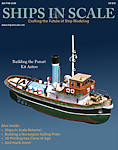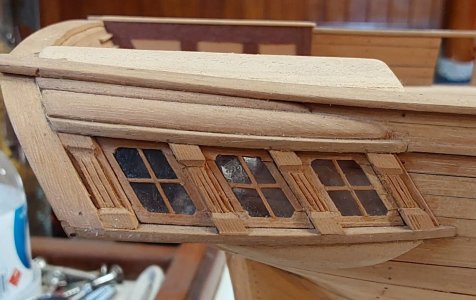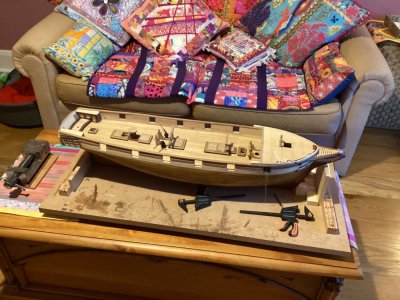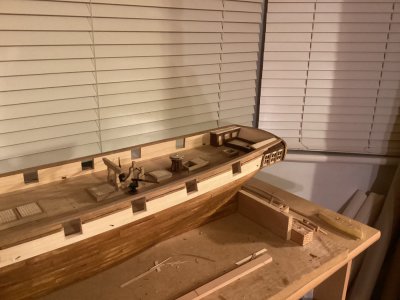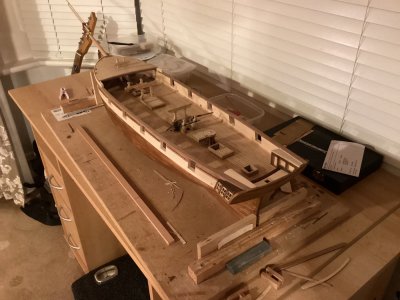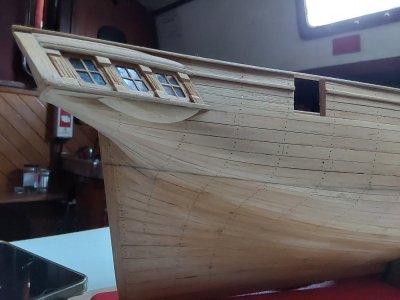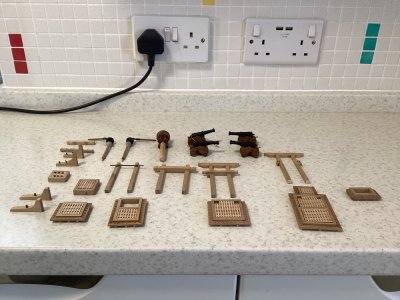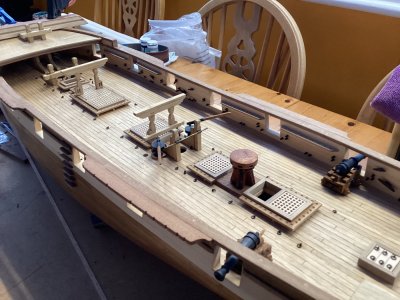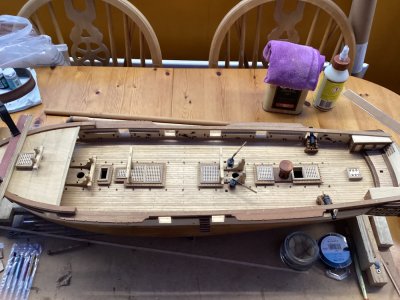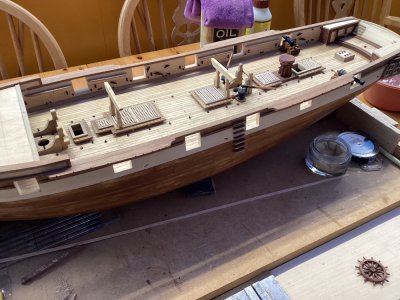- Joined
- May 17, 2025
- Messages
- 40
- Points
- 68

I started this model some 30 years ago pre-internet days when resources (materials and references) were a lot more limited. Mistake one: treenails spaced incorrectly! Nonetheless, given that everything on the model is scratch built with limited means (I even cut the planking myself), I am pretty happy with the look of the ship so far and despite the big gap in my model building experience I am hoping to maintain a similar or better standard of build. Certainly the level of craftsmanship on some of the scale ships on display on this site are almost beyond my comprehension. I am sure that I will find plenty of helpful information and advice from fellow scale ship enthusiasts on this site.
I am pleased to say that after 30 years of storage the only damage the model has suffered is to the end of the port side cathead which should not be too difficult to repair. I will aim to post some updates as progress allows. Currently I am working on the foc'sle area and hope to be able to start planking it in soon. My goal is not complete authenticity in construction techniques but rather to have the model look as close to realism as my skills, time and available research material allow.
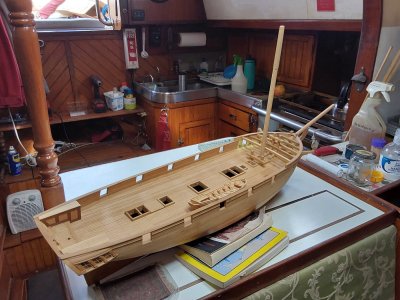
I am pleased to say that after 30 years of storage the only damage the model has suffered is to the end of the port side cathead which should not be too difficult to repair. I will aim to post some updates as progress allows. Currently I am working on the foc'sle area and hope to be able to start planking it in soon. My goal is not complete authenticity in construction techniques but rather to have the model look as close to realism as my skills, time and available research material allow.



